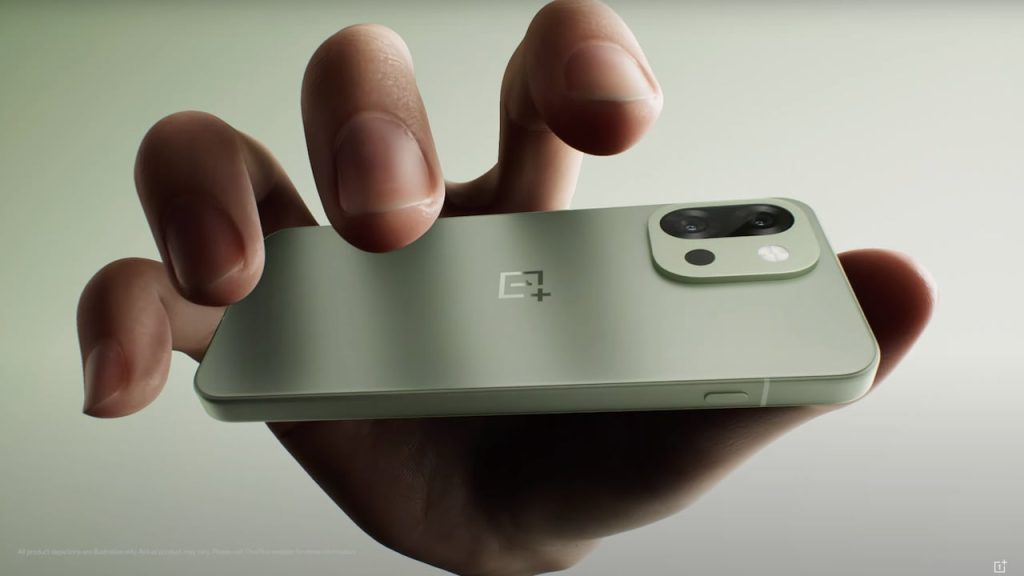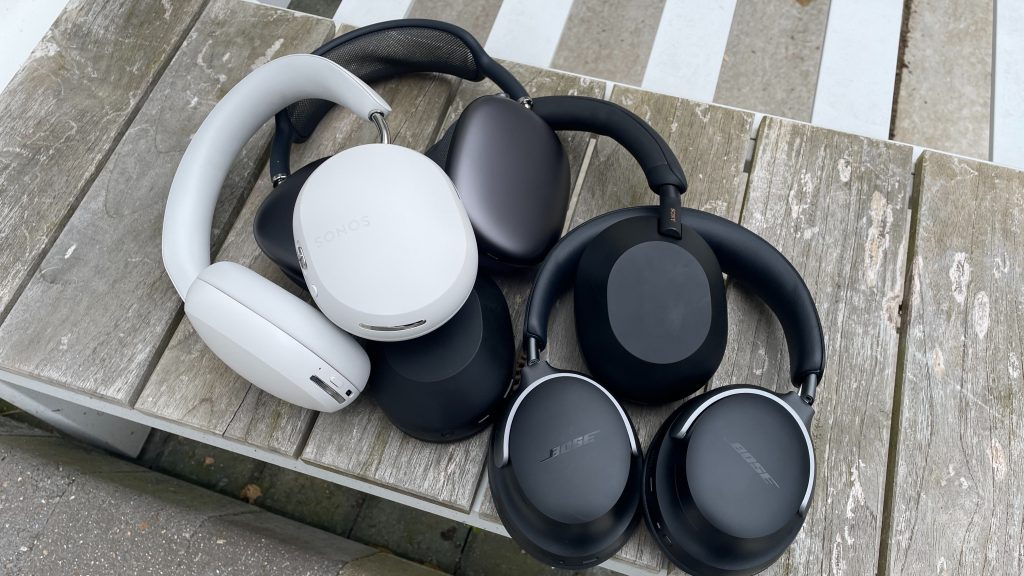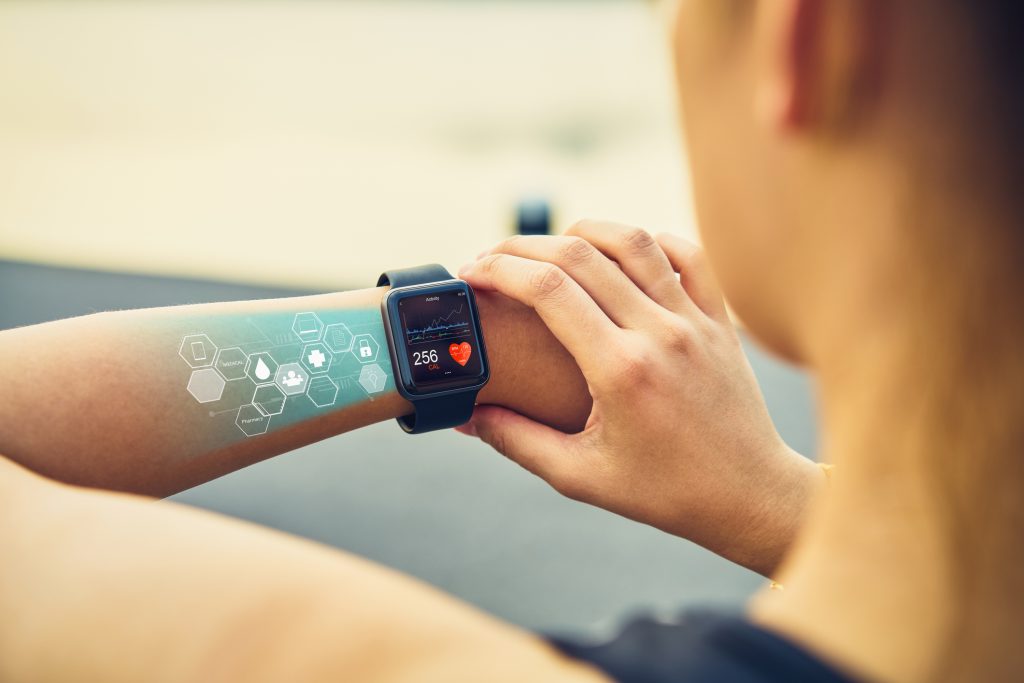
Picture this: It’s 2 AM, and you’re frantically typing your final research paper when your laptop suddenly crashes, taking three hours of unsaved work with it. Sound familiar? As someone who’s witnessed countless students face this nightmare scenario, I can tell you that choosing the right laptop isn’t just about specs and price points—it’s about finding a reliable companion that’ll support your academic journey from freshman orientation to graduation day.
The laptop market has exploded with options, making the selection process overwhelming for students already juggling coursework, part-time jobs, and social commitments. Whether you’re a computer science major who needs serious processing power or an English literature student who primarily writes papers and browses research databases, finding the perfect balance between performance, portability, and price requires careful consideration of your specific needs.
Understanding Your Academic Needs: The Foundation of Smart Laptop Shopping
Before diving into specific models and technical specifications, it’s crucial to assess your unique requirements as a student. Your field of study significantly impacts what you’ll need from your laptop. Engineering and computer science students often require powerful processors and dedicated graphics cards for CAD software and programming environments, while liberal arts majors might prioritize excellent keyboards for extensive writing and long battery life for all-day library sessions.
Consider your typical day: Are you constantly moving between classes, requiring something lightweight and portable? Do you spend hours in the library where finding power outlets becomes a treasure hunt? Will you be running specialized software like Adobe Creative Suite for design projects or statistical analysis programs like SPSS? These questions form the foundation of your laptop selection criteria.
Your budget also plays a crucial role in narrowing down options. While it’s tempting to go for the cheapest option available, remember that this device needs to last at least four years of rigorous academic use. Sometimes investing a bit more upfront saves money in the long run by avoiding costly repairs or premature replacements.
🎯 Top Laptop Categories for Students: Finding Your Perfect Match
Budget-Friendly Champions: Maximum Value Without Breaking the Bank
For students watching every penny, several manufacturers offer exceptional value in the $400-$700 range. The Acer Aspire 5 consistently ranks among the best budget laptops for students, offering solid performance with AMD Ryzen processors that handle multitasking admirably. Its 15.6-inch display provides comfortable viewing for extended study sessions, while the full-size keyboard makes typing lengthy papers a breeze.
The Lenovo IdeaPad 3 deserves special mention for its impressive build quality at an affordable price point. What sets it apart is the attention to detail—the keyboard has excellent tactile feedback, crucial for students who spend hours typing assignments. The laptop’s thermal management keeps it cool during intensive tasks, and the battery life consistently delivers 6-8 hours of real-world usage.
HP Pavilion series laptops offer another compelling option, particularly for students who need reliable performance for general computing tasks. The latest models feature fast SSD storage that dramatically improves boot times and application loading, making your daily workflow significantly more efficient. According to Consumer Reports, HP has improved its reliability ratings substantially in recent years.
Mid-Range Marvels: Balancing Performance and Price
Stepping into the $700-$1,200 range opens up significantly more powerful options that can handle demanding applications while maintaining reasonable portability. The ASUS VivoBook series strikes an excellent balance between performance and aesthetics, featuring sleek designs that don’t scream “budget laptop” in lecture halls.
The Dell Inspiron 15 5000 series has evolved into a remarkably capable machine for students who need versatility. Its configuration options allow you to customize based on your specific needs—opt for more RAM if you’re a psychology major running statistical software, or choose a model with discrete graphics if you’re studying digital media production.
Lenovo ThinkPad E Series laptops bring legendary ThinkPad reliability to the student market at more accessible prices. The keyboard alone justifies the investment for students who write extensively—it’s widely regarded as one of the best typing experiences available. The durability testing that ThinkPads undergo ensures these machines can withstand the rigors of college life.
Premium Powerhouses: For Students Who Demand the Best
For students in demanding fields like engineering, computer science, or digital arts, investing in a premium laptop often proves worthwhile. The MacBook Air with M2 chip represents a paradigm shift in laptop computing, offering desktop-class performance in an incredibly thin and light package. Its battery life routinely exceeds 12 hours, making it ideal for students who spend long days on campus.
The Dell XPS 13 continues to set the standard for premium Windows ultrabooks. Its InfinityEdge display maximizes screen real estate while keeping the overall footprint compact. The carbon fiber construction feels premium and withstands daily wear better than plastic alternatives. For students who value both performance and aesthetics, the XPS 13 delivers on both fronts.
Microsoft Surface Laptop series offers unique versatility with its touchscreen capabilities and excellent stylus support. Architecture and design students particularly appreciate the ability to sketch directly on the screen, while the traditional laptop form factor maintains familiarity for everyday computing tasks.
⚡ Performance Considerations: What Really Matters for Student Computing
Processing Power: The Engine of Your Academic Success
Modern laptops offer various processor options, each suited to different academic needs. Intel’s latest Core i5 processors provide excellent performance for most student applications, handling multiple browser tabs, document editing, and video calls simultaneously without breaking a sweat. For students in fields requiring more computational power, Core i7 processors offer headroom for demanding applications.
AMD’s Ryzen processors have gained significant ground in recent years, often providing better value than Intel alternatives. The Ryzen 5 series particularly excels in multitasking scenarios common in student life—running research software while streaming lectures and taking notes simultaneously. TechRadar’s processor comparisons consistently show AMD’s competitive positioning in price-to-performance ratios.
The key is matching processor performance to your actual needs rather than simply choosing the most powerful option available. A computer science student compiling large codebases benefits from additional processing power, while a history major primarily writing papers might find mid-range processors perfectly adequate.
Memory and Storage: The Foundation of Smooth Operation
RAM requirements have increased substantially as web browsers and applications become more resource-intensive. 8GB represents the minimum for comfortable multitasking, while 16GB provides headroom for more demanding applications. Students who frequently work with large datasets or run virtual machines should consider 16GB as a baseline.
Storage technology significantly impacts daily computing experience. Traditional hard drives have largely given way to SSDs (Solid State Drives), which offer dramatically faster boot times and application loading. A laptop with SSD storage feels significantly more responsive than one with traditional mechanical storage, even with similar processor specifications.
The sweet spot for most students lies in 512GB SSD storage, providing adequate space for operating system, applications, and several semesters’ worth of documents and projects. Cloud storage solutions like Google Drive or Microsoft OneDrive complement local storage, allowing access to files from any device while providing automatic backup.
Graphics Performance: Beyond Gaming
While dedicated graphics cards aren’t essential for most students, certain fields benefit significantly from enhanced graphics performance. Integrated graphics in modern processors handle general computing tasks admirably, including casual photo editing and streaming video content.
Students in fields like architecture, engineering, or digital media production often require dedicated graphics cards. NVIDIA’s GTX and RTX series provide excellent performance for CAD applications, 3D modeling, and video editing. AMD’s Radeon graphics offer competitive alternatives, particularly in laptops focused on value proposition.
The decision between integrated and dedicated graphics should align with your specific program requirements. Consult with professors or upperclassmen in your field to understand whether specialized graphics performance will benefit your coursework.
🔋 Battery Life and Portability: Your Mobile Office Essentials
Real-World Battery Performance
Manufacturer battery life claims often prove optimistic under real-world conditions. Actual usage involving multiple applications, Wi-Fi connectivity, and moderate screen brightness typically yields 60-80% of advertised battery life. Students should target laptops claiming 10+ hours of battery life to achieve 6-8 hours of practical usage.
Apple’s M1 and M2 MacBooks set new standards for battery efficiency, routinely delivering full-day battery life under typical student workloads. The ARM-based architecture provides exceptional power efficiency without sacrificing performance. Windows laptops with AMD Ryzen processors often offer competitive battery life, particularly in the mid-range segment.
Battery longevity depends heavily on usage patterns. Students who primarily work with documents and web browsing achieve longer battery life than those running resource-intensive applications. Understanding your typical workload helps set realistic expectations for battery performance.
Portability Factors Beyond Weight
While weight remains important for students carrying laptops between classes, other factors significantly impact portability. Screen size affects both weight and usability—13-14 inch displays offer excellent portability while maintaining comfortable viewing, while 15-16 inch screens provide more workspace at the cost of increased weight and bulk.
Build quality impacts long-term durability under the stresses of student life. Laptops with reinforced hinges, spill-resistant keyboards, and robust construction withstand daily transport in backpacks better than delicate alternatives. Laptop Mag’s durability testing provides valuable insights into build quality across different manufacturers.
Port selection affects daily convenience significantly. Students benefit from laptops offering multiple USB ports, HDMI output for presentations, and SD card readers for transferring files from cameras or other devices. The trend toward USB-C only designs requires adapters for connecting to older projectors and devices common in academic settings.
💻 Operating System Considerations: Finding Your Digital Comfort Zone
Windows: The Versatile Standard
Windows 11 remains the most versatile choice for students, offering broad software compatibility and familiar interface design. Most specialized academic software runs natively on Windows, eliminating compatibility concerns. The operating system’s multitasking capabilities suit student workflows involving multiple applications simultaneously.
Windows laptops offer the widest range of hardware options and price points, allowing students to find machines matching their specific needs and budgets. The platform’s gaming capabilities provide stress relief between study sessions, while professional software compatibility ensures academic requirements are met.
Microsoft’s integration with Office 365 and educational tools creates seamless workflows for students already using Microsoft ecosystem products. Many universities provide free Office 365 licenses, making Windows laptops particularly attractive for budget-conscious students.
macOS: The Creative Choice
Apple’s macOS excels in creative applications and offers exceptional user experience consistency. Students in fields like graphic design, video production, or music composition often find macOS workflows more intuitive and efficient. The operating system’s stability and security features reduce maintenance overhead, allowing students to focus on academics rather than technical issues.
Ecosystem integration with iPhones and iPads provides seamless file sharing and workflow continuity. Students can start projects on their phones and continue on laptops without friction. The universal clipboard and AirDrop features streamline daily computing tasks.
macOS laptops typically command premium prices, but their longevity and resale value often justify the initial investment. According to MacRumors, Apple laptops maintain higher resale values than Windows alternatives, reducing total cost of ownership.
Chrome OS: The Cloud-First Alternative
Chromebooks offer compelling value for students whose computing needs center around web applications and cloud services. The operating system’s simplicity reduces technical complexity while providing excellent security and automatic updates. Students who primarily use Google Workspace applications find Chromebooks particularly efficient.
Battery life on Chromebooks often exceeds Windows and macOS alternatives due to optimized hardware and lightweight operating system design. The instant-on functionality eliminates waiting for boot sequences, maximizing productivity during brief periods between classes.
However, software limitations restrict Chromebooks to web-based applications and Android apps. Students requiring specialized software for engineering, statistical analysis, or creative work may find Chromebooks inadequate for their needs.
🏆 Comprehensive Laptop Comparison for Students
| Laptop Model | Price Range | Best For | Key Strengths | Potential Drawbacks | Battery Life |
|---|---|---|---|---|---|
| Acer Aspire 5 | $450-$600 | Budget-conscious students | Excellent value, solid performance, good keyboard | Plastic build, average display | 6-8 hours |
| MacBook Air M2 | $1,000-$1,500 | All-around excellence | Outstanding battery life, premium build, silent operation | Limited port selection, premium pricing | 12-15 hours |
| Dell XPS 13 | $900-$1,400 | Premium Windows experience | Compact design, excellent display, solid build quality | Limited upgradability, can run warm | 8-10 hours |
| Lenovo ThinkPad E14 | $600-$900 | Business students, heavy typists | Legendary keyboard, excellent durability, good port selection | Conservative design, average graphics | 8-10 hours |
| HP Pavilion 15 | $500-$800 | Mainstream students | Balanced performance, good display, reasonable price | Average build quality, moderate battery life | 6-8 hours |
| ASUS VivoBook 15 | $550-$750 | Style-conscious students | Attractive design, good performance, solid display | Build quality concerns, average keyboard | 7-9 hours |
| Microsoft Surface Laptop | $800-$1,200 | Creative students | Touchscreen, premium materials, excellent display | Limited ports, proprietary charger | 9-11 hours |
| Lenovo IdeaPad 3 | $400-$650 | Extreme budget | Very affordable, adequate performance, decent build | Limited performance, average display | 6-7 hours |
🛠️ Essential Features Every Student Laptop Should Have
Connectivity and Ports
Modern student life demands diverse connectivity options. USB-A ports remain essential for connecting older devices, flash drives, and peripherals common in academic settings. USB-C ports with Power Delivery capability allow single-cable connections to external monitors while charging the laptop simultaneously.
HDMI output proves invaluable for presentations and connecting to external displays in dorm rooms or study spaces. Wi-Fi 6 support ensures optimal performance on modern campus networks, while Bluetooth 5.0 enables seamless connection to wireless headphones and accessories.
The trend toward minimal port selection requires careful consideration. Students should evaluate their typical connectivity needs and factor in potential adapter requirements when choosing ultra-thin laptops with limited port selection.
Keyboard and Trackpad Quality
Students spend countless hours typing assignments, making keyboard quality crucial for comfort and productivity. Key travel should provide tactile feedback without requiring excessive force, while key spacing should accommodate touch typing without frequent errors.
Backlit keyboards prove essential for late-night study sessions and dim library environments. The backlighting should be evenly distributed and adjustable to avoid eye strain during extended use.
Trackpad responsiveness significantly impacts daily computing experience. Windows laptops have dramatically improved trackpad quality in recent years, with many models now offering precision touchpad support for gesture recognition and smooth cursor control.
Display Considerations
Screen size impacts both portability and productivity. 13-14 inch displays offer excellent portability while providing adequate workspace for most academic tasks. 15-16 inch screens improve multitasking capabilities but increase weight and bulk.
Resolution should match intended usage patterns. 1080p displays provide sharp text and adequate detail for most student applications, while higher resolutions benefit students working with detailed graphics or requiring extensive screen real estate.
Anti-glare coatings reduce reflections in bright environments like outdoor study spaces or well-lit classrooms. IPS panels offer superior color accuracy and viewing angles compared to TN alternatives, important for students sharing screens during group projects.
🔍 Buying Guide: Making the Smart Purchase Decision
When to Buy: Timing Your Purchase
Back-to-school sales in July and August offer the best laptop deals, with manufacturers and retailers competing for student dollars. Black Friday and Cyber Monday provide additional savings opportunities, though selection may be limited to specific models.
Refurbished laptops from manufacturers like Dell’s Outlet or Apple’s Certified Refurbished program offer significant savings with warranty protection. These devices undergo rigorous testing and often include the same warranty coverage as new units.
Educational discounts from manufacturers and retailers can reduce costs by 10-15%. Many universities partner with specific manufacturers to offer exclusive pricing to students and faculty.
What to Avoid: Common Purchasing Pitfalls
Overspecification wastes money on features you’ll never use. A literature major doesn’t need gaming-grade graphics, just as a casual user doesn’t require 32GB of RAM. Match specifications to actual requirements rather than future-proofing for unlikely scenarios.
Underestimating storage needs leads to constant file management headaches. While cloud storage supplements local storage, having adequate local space prevents workflow interruptions and dependency on internet connectivity.
Ignoring warranty and support can prove costly when issues arise. Student schedules don’t accommodate extended repair times, making reliable support crucial for academic success.
📞 Frequently Asked Questions
Q: How much should I spend on a laptop as a student? A: Most students find excellent options in the $600-$1,000 range. Budget-conscious students can find capable machines for $400-$600, while those needing premium features or specialized performance should budget $1,000-$1,500. Remember that this device needs to last throughout your academic career.
Q: Is it better to buy a laptop online or in-store? A: Online purchases often offer better prices and wider selection, while in-store shopping allows hands-on evaluation of keyboard feel and build quality. Many students benefit from physically testing laptops before purchasing, then shopping online for the best price on their chosen model.
Q: Should I buy extended warranty coverage? A: Extended warranties make sense for expensive laptops or students who are hard on their devices. Basic manufacturer warranties typically cover defects for one year, while extended coverage includes accidental damage protection. Consider your usage patterns and budget when evaluating warranty options.
Q: Can I upgrade my laptop later? A: Modern laptops offer limited upgrade options compared to desktop computers. Most allow RAM upgrades, while storage upgrades depend on the specific model. Processors and graphics cards cannot be upgraded, making initial specification choices crucial for long-term satisfaction.
Q: What’s the difference between integrated and dedicated graphics? A: Integrated graphics use system RAM and the main processor for graphics processing, adequate for general computing and casual gaming. Dedicated graphics cards have their own memory and processing power, essential for demanding applications like CAD software, video editing, or serious gaming.
Q: How important is brand reputation when choosing a laptop? A: Brand reputation reflects reliability, build quality, and customer support quality. Established manufacturers like Apple, Dell, Lenovo, and HP typically offer better support and more reliable products than lesser-known brands. However, newer manufacturers sometimes offer competitive products at attractive prices.
Q: Should I choose Windows, macOS, or Chrome OS? A: Windows offers the broadest software compatibility and hardware options. macOS excels in creative applications and offers premium user experience. Chrome OS works well for students primarily using web applications and cloud services. Choose based on your specific software needs and budget constraints.
Q: How do I protect my laptop from theft on campus? A: Use a laptop lock when working in public spaces, never leave your laptop unattended, and consider laptop insurance through your renter’s or homeowner’s insurance. Some students use tracking software like Find My Device (Windows) or Find My Mac (Apple) to locate stolen devices.
Q: What accessories should I buy with my laptop? A: Essential accessories include a quality laptop bag or backpack, external mouse for extended computing sessions, and potentially a laptop stand for ergonomic positioning. External monitors, keyboards, and docking stations enhance dorm room productivity but aren’t essential for most students.
Q: How often should I replace my laptop? A: Most students can expect 4-6 years of reliable service from a quality laptop with proper care. Performance degradation and software compatibility issues typically necessitate replacement rather than hardware failure. Regular maintenance and avoiding physical damage extend laptop lifespan significantly.
🎓 Conclusion: Your Academic Success Starts with the Right Choice
Choosing the perfect laptop for your academic journey requires balancing multiple factors: performance needs, budget constraints, portability requirements, and personal preferences. The investment you make today in a quality laptop will support you through countless late-night study sessions, important presentations, and collaborative projects that define your college experience.
Remember that the “best” laptop is the one that meets your specific needs while fitting your budget. A computer science major’s requirements differ dramatically from those of an English literature student, and your choice should reflect these differences. Don’t get caught up in specification wars or brand loyalty—focus on finding a machine that enhances your productivity and supports your academic goals.
The laptops highlighted in this guide represent proven performers across different price points and use cases. Whether you choose a budget-friendly Acer Aspire 5 for basic academic tasks, a versatile Dell XPS 13 for premium Windows experience, or a MacBook Air for unmatched battery life and build quality, ensure your decision aligns with your specific requirements and financial situation.
Take time to evaluate your typical computing needs, consider your field of study’s specific requirements, and factor in your lifestyle preferences. Visit stores to test keyboards and trackpads, read reviews from other students in your program, and don’t hesitate to seek advice from professors or upperclassmen who understand your academic demands.
Your laptop will become an essential tool for academic success, serving as your research portal, writing companion, presentation platform, and connection to digital learning resources. By making an informed decision based on your specific needs rather than marketing hype or peer pressure, you’ll find a reliable partner for your educational journey.
The technology landscape continues evolving rapidly, with new processors, improved battery technologies, and innovative form factors regularly entering the market. However, the fundamental principles of matching specifications to needs, prioritizing build quality and reliability, and considering total cost of ownership remain constant guidelines for smart purchasing decisions.
As you embark on or continue your academic journey, remember that your laptop is more than just a tool—it’s an investment in your education and future career. Choose wisely, take care of your device, and it will serve you well through graduation and beyond. The perfect laptop is out there waiting for you; use this guide as your roadmap to finding it.
Your academic success depends on many factors, but having reliable, capable technology shouldn’t be one of your worries. With the right laptop supporting your efforts, you can focus on what truly matters: learning, growing, and preparing for your future career. Make the smart choice today, and let your perfectly matched laptop become the foundation for academic achievement and personal growth throughout your college experience.


